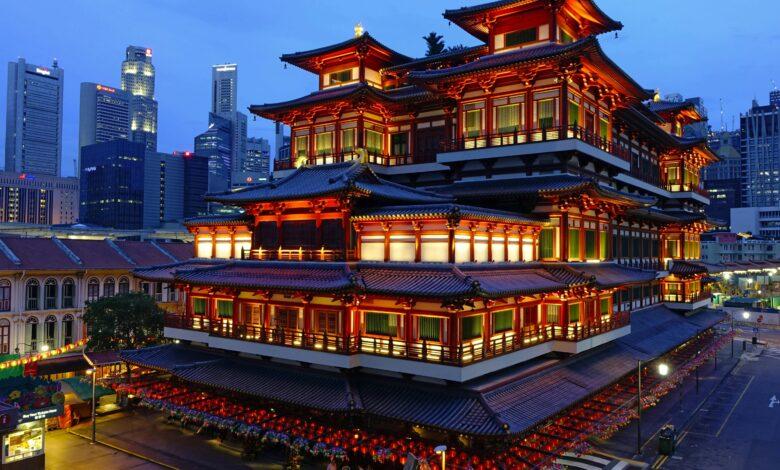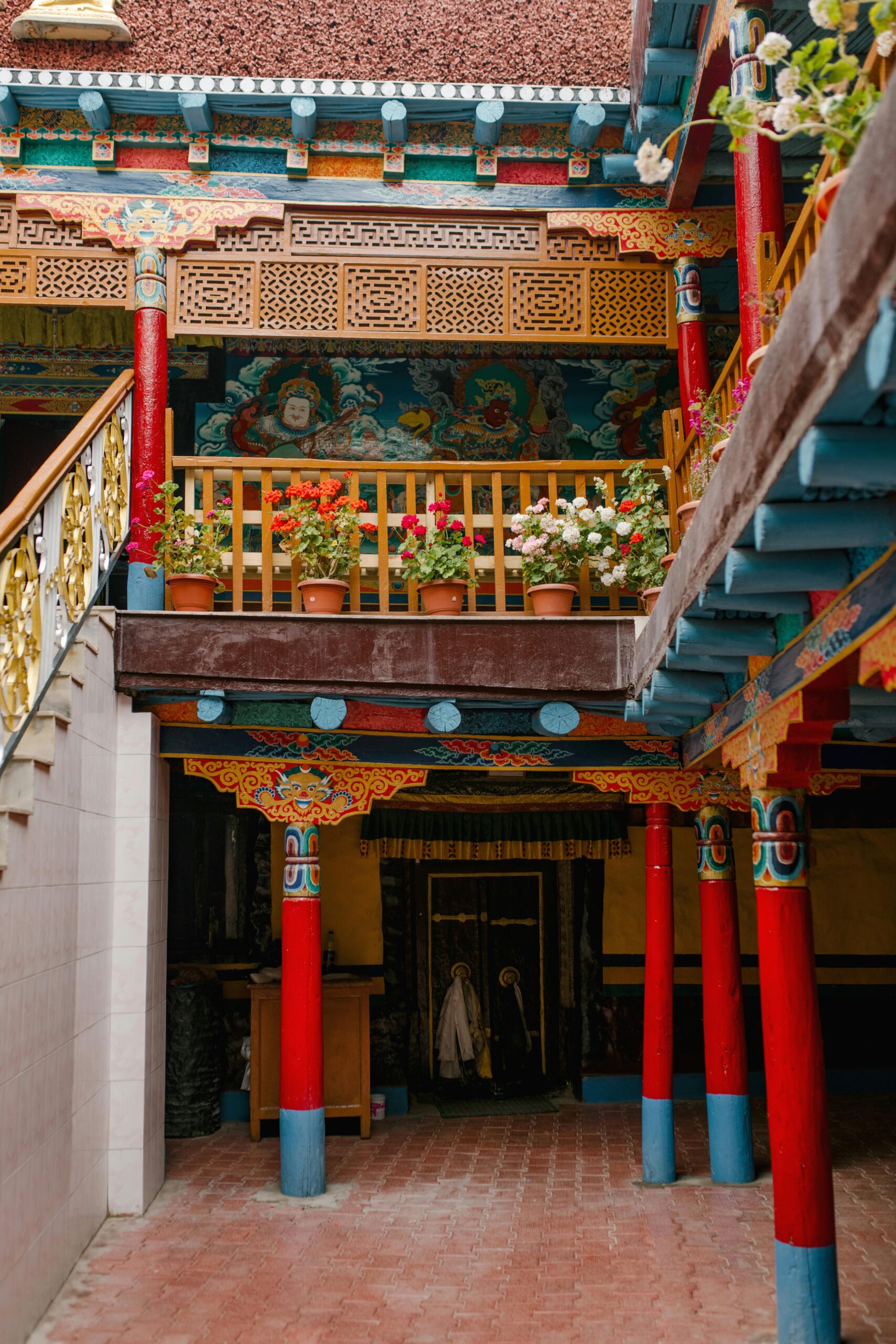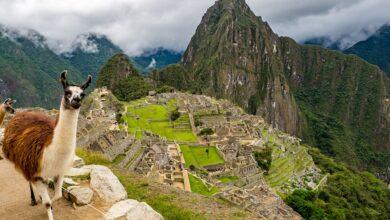A Cultural Melting Pot: Singapore’s Chinatown and Little India 🌏🏙️
Where Tradition and Diversity Converge: Navigating the Charms of Singapore's Chinatown and Little India

Introduction
Welcome to Singapore, a city that proudly wears its cultural diversity as a badge of honor. In the heart of this vibrant metropolis, two neighborhoods stand as epitomes of this rich tapestry – Chinatown and Little India. Join us on a virtual journey as we explore these cultural enclaves, where traditions from the East meld seamlessly with the dynamism of the modern city. Get ready to embark on a sensory adventure through the colors, flavors, and traditions that define Singapore’s Chinatown and Little India.
Historical Background of Chinatown in Singapore
Chinatown in Singapore stands as a testament to the city-state’s rich historical tapestry, tracing its origins back to the early 19th century. It emerged as a vibrant enclave, shaped by the influx of Chinese immigrants who arrived seeking opportunities during Singapore’s colonial era. The district quickly became a melting pot of cultures, with influences from various Chinese regions blending seamlessly.
Over the years, Chinatown evolved, reflecting Singapore’s journey from a British trading post to a modern metropolis. The district weathered economic shifts, political changes, and urban development, yet retained its distinctive character. Today, the streets of Chinatown echo with tales of the past, inviting visitors to explore its historical nuances and architectural charm.
Cultural Landmarks: Temples and Heritage Sites
Chinatown’s cultural landscape is punctuated by iconic landmarks that serve as living testimonies to its rich heritage. Among these, the Sri Mariamman Temple, Singapore’s oldest Hindu temple, stands in harmonious coexistence with the Buddha Tooth Relic Temple, representing the fusion of diverse faiths within the precinct.
Heritage sites like the Chinatown Heritage Centre offer a glimpse into the lives of early Chinese immigrants, showcasing their struggles and triumphs. These landmarks collectively paint a vivid picture of the cultural mosaic that defines Chinatown, providing a profound connection to the roots that have shaped this dynamic enclave.
Unique Blend of Tradition and Modernity
Chinatown in Singapore seamlessly intertwines tradition with modernity, creating a captivating juxtaposition of the old and the new. Traditional shophouses adorned with intricate details line the streets, housing contemporary boutiques, hip cafes, and art galleries. The neighborhood’s markets brim with traditional Chinese wares, yet digital signage and modern amenities abound.
During festivals like Chinese New Year, the streets come alive with vibrant decorations and traditional performances, showcasing a celebration deeply rooted in ancient customs. This fusion of tradition and modernity not only preserves the cultural integrity of Chinatown but also ensures its relevance in Singapore’s ever-evolving urban landscape. The district stands as a living canvas where history meets innovation, making it a must-visit destination for those seeking a glimpse into Singapore’s diverse and dynamic identity.
Introduction to the historical and cultural roots of Little India
Little India is a vibrant enclave where the rich tapestry of Indian culture and history comes alive. Nestled in the heart of bustling cities around the world, these neighborhoods serve as a testament to the diaspora’s resilience and the preservation of traditions. The historical roots of Little India can be traced back to the migration waves that brought Indian communities to various corners of the globe. Whether it’s the Indian merchants who settled in Southeast Asia or the laborers who contributed to the development of other regions, Little India stands as a living legacy of these historical connections.
Overview of iconic places, including temples and bustling markets
Within Little India, iconic landmarks serve as anchors to the community’s identity. Temples, adorned with intricate architecture and vibrant colors, stand as spiritual hubs where the diaspora comes together to celebrate their faith. The bustling markets, filled with the aromas of exotic spices and the vibrant hues of traditional clothing, offer a sensory journey through the heart of Indian culture. From the lively chatter of vendors to the array of goods on display, these markets are not just commerce centers but cultural hubs that connect people to their roots.
Exploration of the vivid traditions and festivals celebrated in Little India
Little India is a perpetual celebration, with a calendar brimming with vivid traditions and festivals. From Diwali, the festival of lights, to Holi, the festival of colors, the streets come alive with the vibrancy of Indian festivities. These celebrations transcend borders, inviting both the Indian diaspora and locals to partake in the joyous occasions. The air is filled with the sounds of traditional music, and the streets are adorned with colorful decorations, creating an immersive experience that transcends geographical boundaries. Little India becomes a microcosm of cultural exchange during these celebrations, fostering a sense of unity and shared heritage.
In Little India, tradition isn’t just a relic of the past; it’s a dynamic force that continues to shape the present, providing a sense of belonging and identity to the diverse communities that call it home.

Exploring Singaporean-Chinese Cuisine in Chinatown
Chinatown in Singapore is a vibrant enclave that tantalizes the taste buds with a rich tapestry of culinary delights. The Singaporean-Chinese cuisine found here is a reflection of the city-state’s multicultural heritage, blending traditional Chinese flavors with unique local twists. As you navigate the bustling streets, you’ll encounter an array of eateries offering an authentic experience.
Signature Dishes
Indulge in the iconic Hainanese Chicken Rice, where succulent chicken is served on fragrant rice accompanied by chili sauce and ginger paste. For those seeking a savory adventure, Char Kway Teow, stir-fried flat rice noodles with prawns, eggs, and Chinese sausage, is a must-try. Dim Sum lovers can savor the delicate flavors of Har Gow (steamed shrimp dumplings) and Siew Mai (pork dumplings).
Popular Eateries
Maxwell Food Centre is a bustling hawker center in Chinatown that beckons with a myriad of choices. Tian Tian Hainanese Chicken Rice, nestled within Maxwell, is renowned for its flavorful rendition of the classic dish. Alternatively, visit Chinatown Complex Food Centre for a diverse range of Chinese dishes, including the delectable Char Kway Teow at Hill Street Fried Kway Teow.
The Melange of Indian Flavors in Little India
Venture into Little India, an enclave pulsating with the vibrant hues and aromatic spices of Indian culture. This district immerses you in the heart of Singapore’s Indian community, offering an irresistible array of culinary treasures that showcase the diversity of Indian cuisine.
Signature Dishes
Savor the explosive flavors of Chicken Biryani, a fragrant rice dish infused with spices, tender chicken, and aromatic herbs. For vegetarians, Masala Dosa is a crispy fermented rice crepe filled with spiced potatoes and served with coconut chutney and tangy sambar. End your culinary journey on a sweet note with Gulab Jamun, delectable deep-fried milk dumplings soaked in sugar syrup.
Popular Eateries
Make your way to Komala Vilas, an iconic vegetarian restaurant in Little India, for a taste of South Indian cuisine. Banana Leaf Apolo is another celebrated establishment, known for its banana leaf rice and a diverse menu of Indian dishes. These eateries provide an authentic experience, showcasing the rich tapestry of Indian flavors in the heart of Singapore.
Chinatown’s Vibrant Festivals: A Celebration of Culture
Chinatown, with its rich cultural heritage, is home to a myriad of vibrant festivals that captivate locals and tourists alike. One of the most anticipated events is the Chinese New Year celebration, a spectacle of colors, traditions, and joyful festivities. The streets come alive with dragon and lion dances, firecrackers, and elaborate parades, creating an electric atmosphere that symbolizes renewal and good fortune. The Mid-Autumn Festival is another highlight, where the community gathers to enjoy mooncakes, lantern displays, and cultural performances. These festivals not only showcase the deep-rooted traditions of the Chinese community but also offer a unique and immersive cultural experience for all.
Little India’s Festive Tapestry: A Symphony of Colors and Traditions
Step into Little India, and you’ll find a tapestry of festivals that celebrate the rich traditions of the Indian community. Diwali, the Festival of Lights, transforms the neighborhood into a radiant spectacle with vibrant decorations, traditional music, and a dazzling array of lights. Navaratri, a nine-night dance festival, brings the streets alive with energetic performances and colorful attire. These festivals not only pay homage to religious and cultural practices but also provide a window into the warmth and hospitality of the Indian community. Little India becomes a melting pot of traditions during these celebrations, inviting everyone to join in the joyous festivities.
Bustling Markets: A Shopper’s Paradise
Both Chinatown and Little India boast bustling markets that offer a sensory overload of sights, sounds, and scents. In Chinatown, the markets are a treasure trove of exotic goods, from traditional Chinese herbs to intricate handicrafts. Little India’s markets are a kaleidoscope of colors, with stalls selling vibrant fabrics, intricate jewelry, and aromatic spices. The shopping experience transcends mere transactions; it becomes a cultural immersion, allowing visitors to connect with the heritage and craftsmanship of the communities. These markets, pulsating with life and energy, are a must-visit for those seeking a truly authentic and diverse shopping adventure.
Cultural Traditions: Keeping Heritage Alive
Beyond the festivals and markets, the cultural traditions in Chinatown and Little India add depth to the experience. Traditional tea ceremonies, martial arts demonstrations, and cultural workshops provide a glimpse into the rich heritage of Chinatown. In Little India, the practice of Kolam, intricate floor drawings made with rice flour, is a tradition that showcases the community’s dedication to preserving ancient art forms. These cultural traditions serve as a bridge between the past and the present, fostering a sense of pride and continuity within the neighborhoods. Visitors can partake in these activities, gaining a deeper understanding of the cultural fabric that makes these communities so unique.
FAQs
Q. Is it safe to explore Chinatown and Little India at night?
A. Yes, both neighborhoods are generally safe at night, with bustling markets and vibrant nightlife. Exercise standard precautions.
Q. What are the must-try dishes in Chinatown and Little India?
A. In Chinatown, try the Hainanese chicken rice; in Little India, don’t miss the biryanis and dosas.
Q. Are there guided tours available in these neighborhoods?
A. Absolutely, guided tours are available and recommended for a deeper understanding of the history and culture of Chinatown and Little India.
Q. Can I buy cultural souvenirs in these areas?
A. Certainly, both Chinatown and Little India offer a plethora of cultural souvenirs, from traditional clothing to unique handicrafts.
Q. Are there vegetarian options in the local eateries?
A. Yes, both neighborhoods offer a variety of vegetarian options, ensuring a delightful experience for non-meat eaters.
Q. What cultural events can one experience in Chinatown and Little India?
A. Both neighborhoods host cultural events and festivals, such as Chinese New Year in Chinatown and Diwali in Little India.
Conclusion
As we conclude our exploration of Singapore’s Chinatown and Little India, we marvel at the harmonious coexistence of traditions within this cultural melting pot. From the vibrant colors of Little India to the fusion of old and new in Chinatown, these neighborhoods are not just geographical spaces but living, breathing testaments to Singapore’s commitment to preserving its rich heritage. In every corner, in every flavor, and in every celebration, we find a story that adds to the incredible narrative of Singapore’s multicultural identity. As we step away from these cultural hubs, may the memories linger, and may the spirit of diversity continue to thrive in this remarkable city-state.
UP NEXT
https://touristeyes.com/cultural-immersion-in-marrakech-morocco/





Facebook Comments